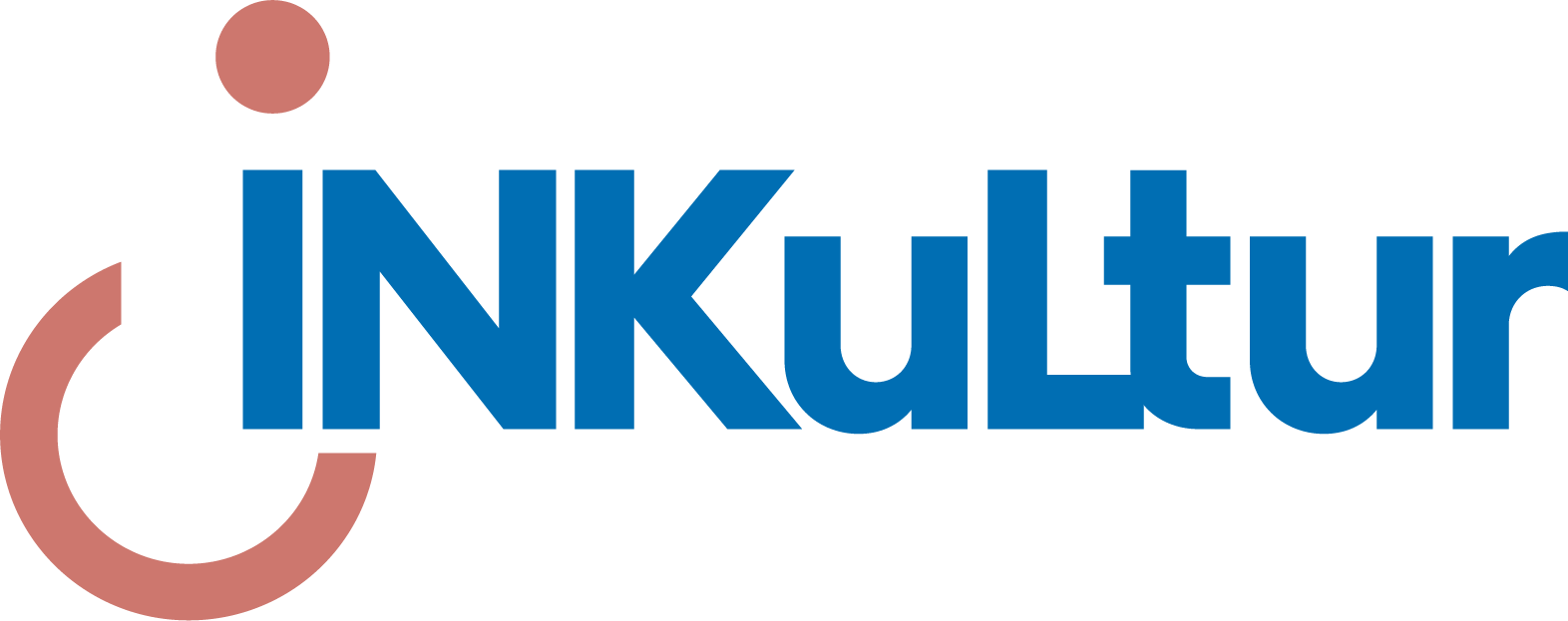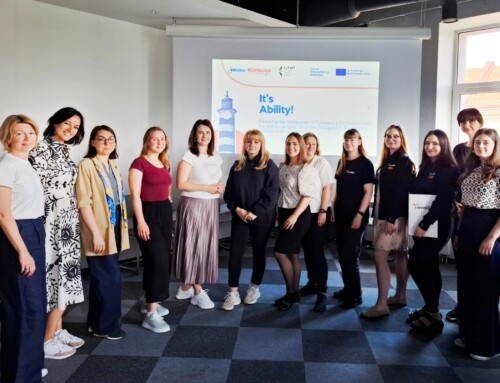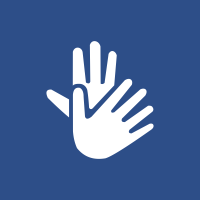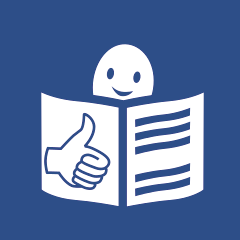Inclusion questions what is “normal”. Interview with inclusion expert Dirk Sorge
The interview was conducted in German as part of a collaboration between the INKuLtur program and Berlinklusion, represented by Dirk Sorge, in April 2021, and then translated into English.
Dirk Sorge works as an artist and cultural mediator in Berlin, Leipzig and Chemnitz and advises museums planning to break down barriers in their exhibitions. More about Dirk Sorge
The interview was prepared by INKuLtur project coordinator and PR-Manager Nataliia Zviagintseva.
Nataliia Zviagintseva: Dear Dirk, to start with, let me ask you a general question: how inclusive and barrier-free do you think the cultural sector in Germany really is?
Dirk Sorge: In Germany, the United Nations Convention on the Rights of Persons with Disabilities (CRPD) came into force on 26 March 2009. Since then, the topic of inclusion has received more attention, but relatively little has changed in the cultural sector. One frequently hears phrases such as “We have only just started on our way”, “There is still a lot to do” and “First the barriers in people’s minds have to be broken down”. In fact, inclusion is still a niche topic and is hardly negotiated in the mainstream of the cultural sector. Often, inclusion is only considered at the level of the audience and cultural workers and employees are hardly thought about. But I also see that artists and activists with disabilities are becoming louder and more self-confident and demanding their rights. We at Berlinklusion support these movements. We also always emphasise that inclusion has a critical and creative side that brings a new perspective to the content of a cultural institution (e.g. the question of what a museum collects and exhibits and how the objects are interpreted). This programmatic level of inclusion has hardly been dealt with in Germany so far.
Nataliia Zviagintseva: What are the current barriers and obstacles to successful inclusivity in cultural organisations?
Dirk Sorge: A big problem is that inclusion is often carried out in the form of short-term projects. This does not allow for a long-term, structural change in a cultural institution. Most of the time, the cultural organisation then understandably concentrates on quickly achievable accessibility goals, e.g. a museum has a booklet printed in easy-to-read language or a theatre offers a play with interpretation in sign language. Only a few cultural institutions regularly include costs for inclusion and accessibility in their budgets. We also observe that often only the Department for Education and Outreach is concerned with the topic of inclusion, although it is actually a cross-cutting issue and affects all departments of an institution.
In addition, there are very tangible barriers such as the protection of historical landmarks, which blocks the renovation of many old buildings in which cultural institutions are located. In Germany, deceased architects have more rights than living people with disabilities. There is also a lack of specific knowledge about accessibility in cultural institutions.
A completely different problem is the lack of representative figures and statistics that determine how diverse the audience, cultural workers and employees in cultural institutions are and what discrimination exists in the cultural sector. Some studies, such as the study on diversity in film, provide shocking results and hopefully increase the pressure on other arts branches.
Nataliia Zviagintseva: What is your day-to-day work like at the Chemnitz State Museum of Archaeology as the person responsible for inclusion?
Dirk Sorge: I have worked at the State Museum of Archaeology in Chemnitz for two years and have had the positive experience that the management fully supports the topic of inclusion and diversity. This makes changes much easier to implement than in other museums. I was mainly involved in the planning and implementation of temporary exhibitions. From the selection of the design companies to the production of the tactile models and writing the audio guide texts, I was involved in many steps of the work. As a team, we looked for the best ideas and solutions in each case. For the exhibition “The City. Between Skyline and Latrine”, I was also able to give content-related input (this is what I meant earlier by inclusion at the level of the programme). We also agreed on certain standards so that things like font sizes and structural issues of the exhibition don’t have to be clarified over and over again. I was also involved in public relations issues and an important task was networking with disability self-help actors in the city and throughout Saxony.
I worked very closely with a colleague who accompanies the museum in diversity-oriented organisational development. In this way, diversity and inclusion went hand in hand, as I believe they always should. In Germany, disability is unfortunately often thought of separately from other dimensions of discrimination, such as origin, gender, religion, class, etc.
Nataliia Zviagintseva: At the same time, you are also a visual artist and cultural mediator. How do these two perspectives differ for you in terms of inclusion?
Dirk Sorge: As an artist, I have a more distanced view of social phenomena, although some of them directly affect me. I need this distance to be able to criticise and process things and to put them into an artistic form. For example, I deal with how norms and habits develop that lead to exclusion and stereotypes. And how this is inscribed in images and narratives. The topic of Ableism has concerned me in recent years, i.e. the evaluation and devaluation of people based on their abilities. From a distance, you can see, for example, how images of people are connected to technological developments and automation.
As a cultural mediator, I tend to try to reduce distances and, for example, bring the participants of a guided tour into conversation. I often use mediation methods that go beyond speaking. They can be experimental, performative or playful and are intended to provide multiple approaches to a theme. The distance between the audience and the artists or works in an exhibition, created by awe or high expectations, can be a real barrier. During the guided tour in an art museum, one of my tasks is to make clear that artists are only human and that the value is not in the artwork itself, but in the relationship with the audience.
Nataliia Zviagintseva: Last year, we organised a round table in Ukraine on the topic of ” Art by People with Disabilities”. We noticed that the topic is something that is still new to the general public. What is the situation in Germany with artists and cultural workers with disabilities who work professionally?
Dirk Sorge: In Germany, the situation for artists with disabilities is still very difficult. Some try to hide their disability for fear that otherwise the art will suddenly be seen through different eyes or reduced to the disability. Many art colleges are badly prepared for students with disabilities. I only brought up the subject of my own visual impairment after I had successfully applied to art school.
There is hardly any public or media coverage of artists with disabilities. When it does happen, it is sometimes sensationalist and ableist (“the blind pianist has a particularly sensitive ear”). Many people only think of art created in workshops for people with disabilities. These workshops are sometimes very problematic and keep the artists trapped in a system of dependency and power imbalance. They are a violation of the CRPD. Many professional artists do not want to be associated with this.
At Berlinklusion we often speak of “disability arts” instead of “disability art” to avoid the negative connotation. In other words, we tend to connect with an English-language discourse that is only gradually arriving in Germany. Unfortunately, however, we are creating new barriers and exclusions through English-language naming, which is why we are not yet happy with it.
Nataliia Zviagintseva: And now I would like to ask my final question: How do you understand inclusion?
Dirk Sorge: Inclusion questions what is “normal”. This can be uncomfortable for some people who have settled nicely into normality. Some people believe that inclusion should ignore all differences and make everyone equal. But this is nonsense and the opposite is true: inclusion is the process of valuing and respecting inequalities. It is recognised that not everyone is the same and that needs are different. Everyone is equal but not the same. This can mean that several choices have to be offered so that there is freedom of choice. Transparency is important for this, for example. The ultimate goal is self-determination.
Accessibility is a requirement for inclusion. But accessibility alone is not enough if power structures, attitudes and habits are not reflected. The argument “we have always done it this way” is no longer valid in an inclusive society.
This interview is part of INKuLtur-Programme implemented by Austausch e.V. together with Eastern Partnership countries funded by the German Federal Foreign Office.
Austausch e.V. is responsible for the content of this publication. It does not necessarily reflect the views the German Federal Foreign Office.








